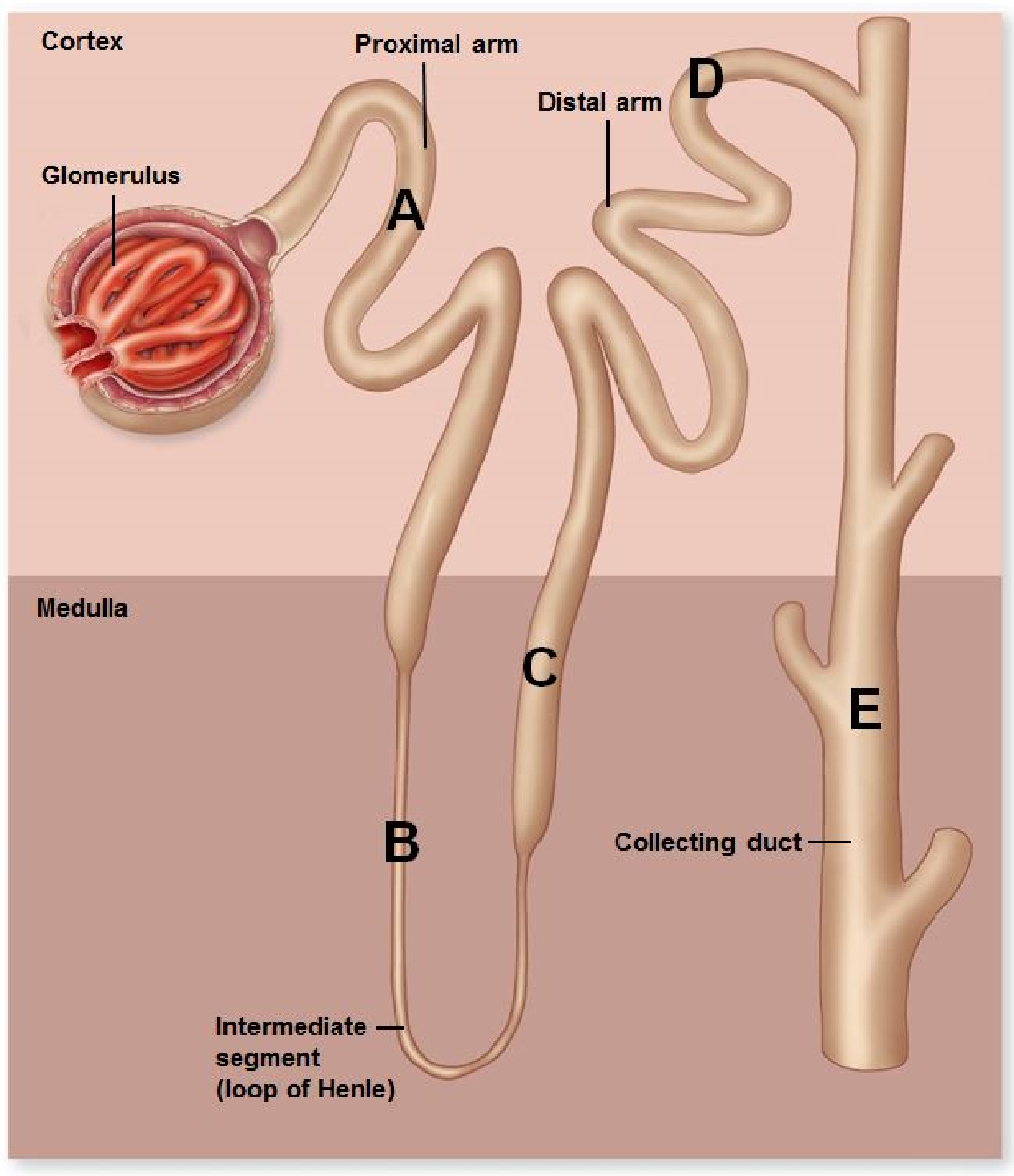The pulmonary vein carries blood that is rich in oxygen back to the heart. Is there anything unexpected about the name of this vein?
A. There is nothing unexpected about the name of this vein.
B. Veins usually carry blood that has been depleted of oxygen.
C. Pulmonary refers to veins that carry blood to the lungs.
D. Veins usually carry blood away from the heart.
B. Veins usually carry blood that has been depleted of oxygen.
You might also like to view...
The salivary amylase gene (AMY1) is present in two diploid copies in chimpanzees. Humans are known to have between 6-15 copies, an adaptation that is thought to be related to the high-starch diet of humans
This difference among humans is an example of A. G banding. B. copy number variation C. a simple translocation. D. a reciprocal translocation.
According to the below figure, which letter corresponds to the area where water is absolutely not reabsorbed?

A. A
B. B
C. C
D. D
E. E
__________ are evidence of life in the distant past. Fill in the blank(s) with the appropriate word(s)
A mycologist visits your biology class and discusses her research on a particular fungus that lives on the bark of damaged spruce trees. She explains that the fungal hyphae of her research organism is heterokaryotic. You raise your hand and request that she define that word. Her correct response is
A. heterokaryotic means that the nuclei of each compartment of the hyphae are genetically distinct. B. heterokaryotic means that each compartment of the hyphae contain two distinct nuclei. C. heterokaryotic means that each compartment of the hyphae contains only one nucleus. D. heterokaryotic means that the nuclei of the fungal hyphae are genetically the same.